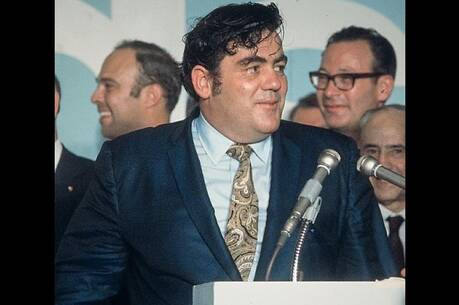Outmaneuvering the Bureaucrats
More words are misused in politics than in any other field of human endeavor. Radical has come to mean something like extremist through repeated misapplication, but it comes from the Latin radix, meaning root; radical politics is therefore supposed to be just another term for grass-roots activism.
Michael Gecan is, by any definition, a radical. Trained by Saul Alinsky, whose Rules for Radicals is the original handbook for grass-roots organizing, Gecan is both clearly a leftist in politics and a professionalthat is, a hired and paid organizer of community organizations and citizen activist groups. A leading light in Alinsky’s Industrial Areas Foundation (I.A.F.), he was the organizer of the East Brooklyn Congregations, a coalition of religious groups ranging from Jews to Pentecostals to Lutherans to Catholics who showed the incredible power people can have over their own lives and their own government when they stand together in creative ways.
The members of the East Brooklyn Congregations (E.B.C.), faced with a neighborhood just as troubled as the South Bronx or Harlem but without the same ethnic homogeneity and media attention that made those communities the center of so much study and political posturing, decided both to strengthen their own individual organizations and to forge them into a united civic force. Eventually, over the course of more than two decades, they became a model I.A.F. group and did everything from building the celebrated Nehemiah Project Houses to forcing a reluctant city government to rebuild deteriorated parks facilities to running their own consumer protection squad that inspected the weights and measures, freshness dates and refrigeration temperatures, sanitary conditions and merchandise quality of local supermarkets.
Gecan was there, in the middle of it all, a Chicagoan brought in through the I.A.F. to develop the E.B.C. into an organization of leaders able to take direct, effective action to accomplish concrete goals. He worked with similar I.A.F. groups in lower Manhattan and Queens, and though they still receive little attention from the news media and little public acclaim from major politicians, they have been remarkably effective in forcing a city and state normally ruled by bosses and bankrolls to pay attention to people, and even to deliver to citizens what those citizens want.
Alinsky’s book was a manual for community organizers. Gecan’s book is not. It is one part personal memoir, one part anecdotes about the nitty-gritty of urban politics and one part exposition of some of the broad principles of I.A.F. organizingwith a bit of a Gecan manifesto thrown in. He recounts tales of his meetings with New York mayors Ed Koch, David Dinkins and Rudy Giuliani and other notables, such as Mario Cuomo. Gecan clearly has interesting insights into these men. In private meetings, Cuomo was more an impatient ward-heeler than a meditative scholar; Giuliani the prosecutor, Giuliani the candidate and Giuliani the mayor were almost three different people. But he tosses these off as mere asides as he exposes, through anecdotes, the themes of the book: the importance of building meaningful public relationships through individual, formal meetings; the necessity of understanding, and accepting as the rules of the game, the realpolitik of government, no matter how just your own cause is; the necessity of avoiding low-level staffers, no-cost commitments on the part of politicians and patronizing pats on the head for your group; the necessity of actionreal actionbeyond the ineffective street theater of the World Trade Organization protests or the equally ineffective pseudo-action of joining coalitions, councils and other subscription groups.
Gecan has practical stories for activists (how to stand up to a mayor and walk out of his dinner party; how literally to seize the dais before the bureaucrats arrive, and turn a civic group’s appearance before a commissioner into a commissioner’s appearance before a civic group; and so on). He also has some sketchy ideas for the future. Gecan sees the world divided not into two, but three sectors: the public sector (government), the private sector (market-based industry) and the relational sector, in which he considers himself a relational worker. He closes the book with a sort of manifesto, calling for a radical renewal of our cities, of school systems and of both micro- and macro-economies based on new, realistic principles for the interrelationship of these three sectors.
Going Public should probably be read by those familiar with Alinsky’s work or the I.A.F. and who are involved with community organizing already. It is a very useful supplement, but not quite enough in itself, to serve as a blueprint for organizers. Even those who are not creating their own community groups (political scientists, historians) will find material for reflection, but the stories are merely tantalizing, and will make urban historians, amateur and professional, wish that Gecan would write a more exhaustive history of E.B.C. and some of the other causes and battles with which he has been involved.
This article also appeared in print, under the headline “Outmaneuvering the Bureaucrats,” in the February 24, 2003, issue.








